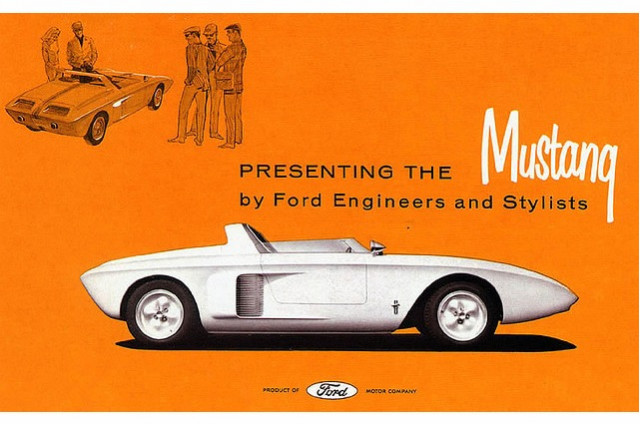Ford Mustang iconology: Pony car's ups and downs
The Ford Mustang might be the ultimate automotive success story. Born from humble beginnings, the Ford Mustang is an enduring icon that has had its share of ups and downs.
Today’s Mustang channels its heritage like never before, with retro-inspired trim packages that hark back through the model’s milestones. The Mustang’s story officially began April 17, 1964, when Ford took the wraps off of its original Mustang at the New York World’s Fair, but the pony car’s tale started decades prior.
At the height of the Cold War, American servicemen scattered through the U.K. and divided Germany discovered the allure of small sports cars in Europe. Pint-size proportions were a necessity in Europe’s medieval cities, where big Packards made for American boulevards were a tight—or an impossible—squeeze. Britain’s MG, Italy’s Alfa Romeo, and Germany’s Mercedes-Benz all built stylish small cars that often made their way across the pond.
Detroit picked up on this first with the Chevrolet Corvette in 1953, and later with the Ford Thunderbird in 1955. These roadsters captured an American interpretation of Europe’s love for sporty driving—particularly the Corvette.
Ford fell into old habits, transitioning the Thunderbird into a soft boulevardier after its first generation. Yet designers and engineers in Dearborn hardly gave up on the idea of a sporty, stylish car.

Ford Mustang I Concept Car
In 1962, a committee of Ford managers spearheaded by Lee Iacocca envisioned a small, track-oriented sports car in the vein of the MGs and Triumphs that dominated weekend amateur racing. They looked to Ford’s European portfolio, where they nabbed a German-market V-4 engine and 4-speed manual. The mid-engined Mustang I concept car made its first appearance at the 1962 United States Grand Prix at Watkins Glen in New York. With Dan Gurney behind the wheel, it whipped around The Glen nearly as fast as Formula One cars. Throughout the next year, the Mustang I was paraded around at other enthusiast gatherings to gauge consumer interest.
The rakish Mustang I was a hit with its target audience, but Iacocca knew he needed more than just car enthusiasts to get the Mustang green-lighted. Iacocca instead thought Ford should go after the sporty Chevrolet Corvair Monza, a practical compact car with zippy styling and more personality than staid sedans.
Ford approved the Mustang in concept, providing the committee took the Mustang I’s basic idea and reshaped it for four passengers. A year later, a more conventional Mustang II show car debuted—again at Watkins Glen.
This time, the sporty shape was stretched to seat four, the engine was relocated to the front, and its details were ready for production. It wasn’t hard for show-goers to picture themselves behind the wheel of this new car, which split the difference between sports car and convertible cruiser.
Email This Page